(Photo credit; University of Fashion – Vlisco print – Perelman Museum, Philadelphia)
As we celebrate Black History Month 2025, I thought it fitting to explore the historical contributions that African Americans have made to the world of fashion and which Black designers to watch in 2025. Before I do, I’d like to take a look at the origin of Black History month. Started as Negro History Week in 1926, it was the brainchild of Harvard-educated historian Carter G. Woodson (known as the “Father of Black History”). In 1970, the Black United Students and Black Educators at Kent State University expanded the idea to include the entire month of February, coinciding with the birthdays of Abraham Lincoln and Frederick Douglas (leader of the New York & Massachusetts abolition movement). Since 1976, every U.S. president has designated February as Black History Month in observance of African Americans.
African Prints
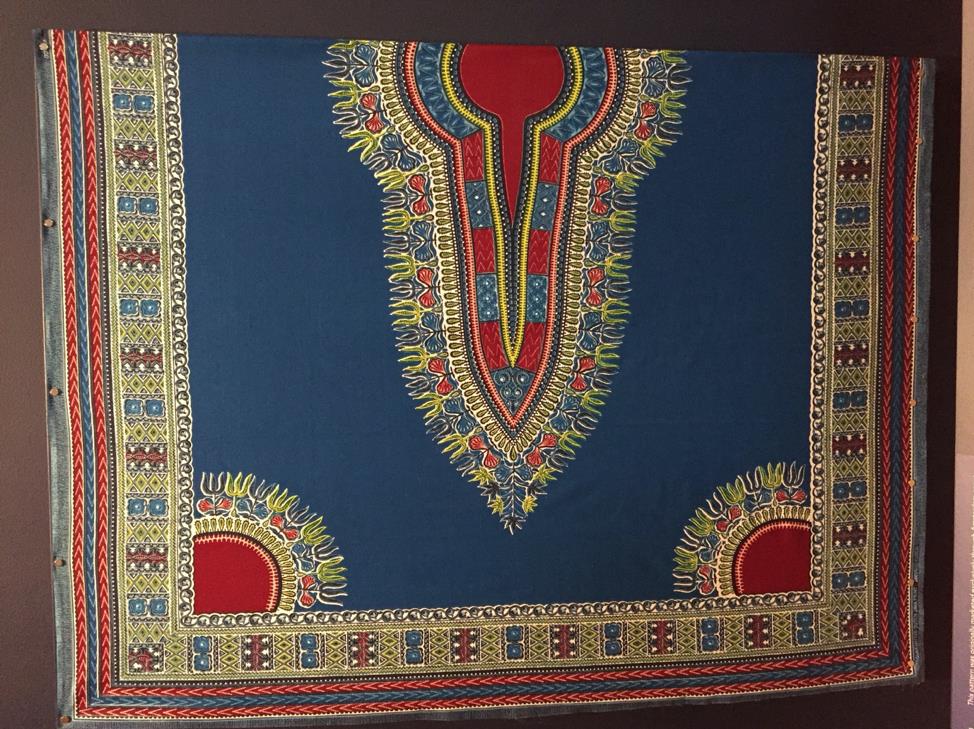
(Photo credit – University of Fashion- Vlisco African dashiki print Perelman Museum, Philadelphia)
When most of us think of African dress, the first thing that comes to mind is the dashiki, a loose-fitting garment made of a colorful printed cotton. But, do you know the origin of those prints? African Prints are wax prints that are industrialized versions of hand-drawn, hand-blocked and hand-dyed batik patterns that date to 8th century China and India. It wasn’t until later in the 13th century that islanders on Java refined the technique. The two factories that originally created these prints, ABC (an English wax company that moved to Ghana), and Vlisco, (located in the Netherlands), eventually found a market for them in West Africa around 1867. Since then, the prints caught on and have been made popular by African vendors who assign meaning and value to them. The powerful businesswomen who sell these prints in Africa are nicknamed “Mama Benz” after the fancy cars they buy with their earnings.
In the U.S., African prints are worn as a symbol of pride and they continue in popularity among designers on the global stage.
To learn more about West African textiles, view our series: West African Textiles: Manjak Cloth of Senegal, West African Textiles: Mali-Bògòlanfini and West African Textiles: Faso Dan Fani Cloth of Burkina Faso.
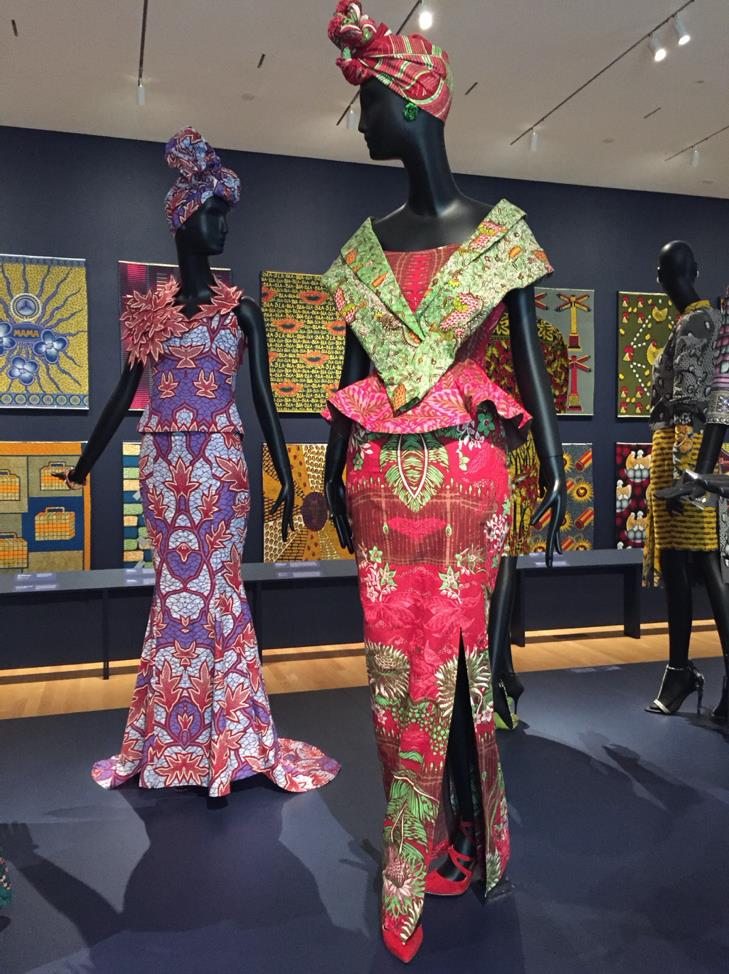
(Photo credit: University of Fashion – Vlisco print at Perelman Museum, Philadelphia)
In fact, the Vlisco bull’s-eye pattern below was used in Burberry’s spring/summer 2012 collection. And Studio 189, a Ghana/U.S.-based sustainable fashion line debuted their print collection at NYFW 2019.
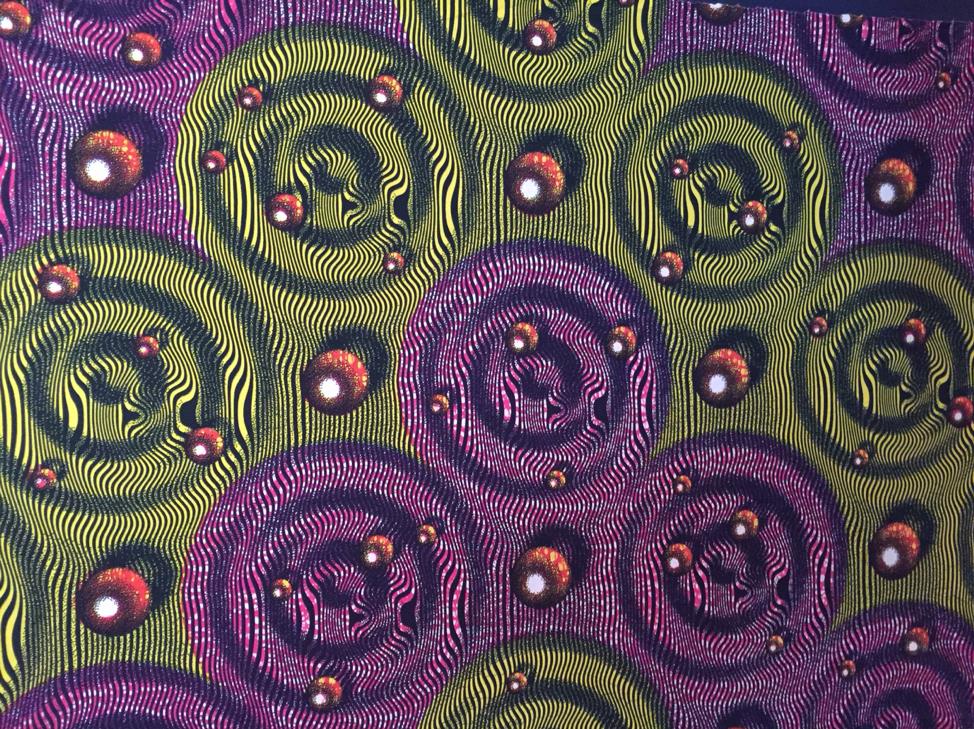
(Photo credit: University of Fashion- Vlisco print designed by Piet Snel 1936)
African Head Wraps
Another major contribution of African dress is the head wrap, head tie or head scarf, worn either for day-to-day activities or for ceremonial/religious purposes. These headdresses go by various names depending upon which part of Africa. For example the gele id from West Africa, while the doek and the duku are worn in Southern Africa.
Check out this cool YouTube video to learn how to tie 10 different variations of head wraps.
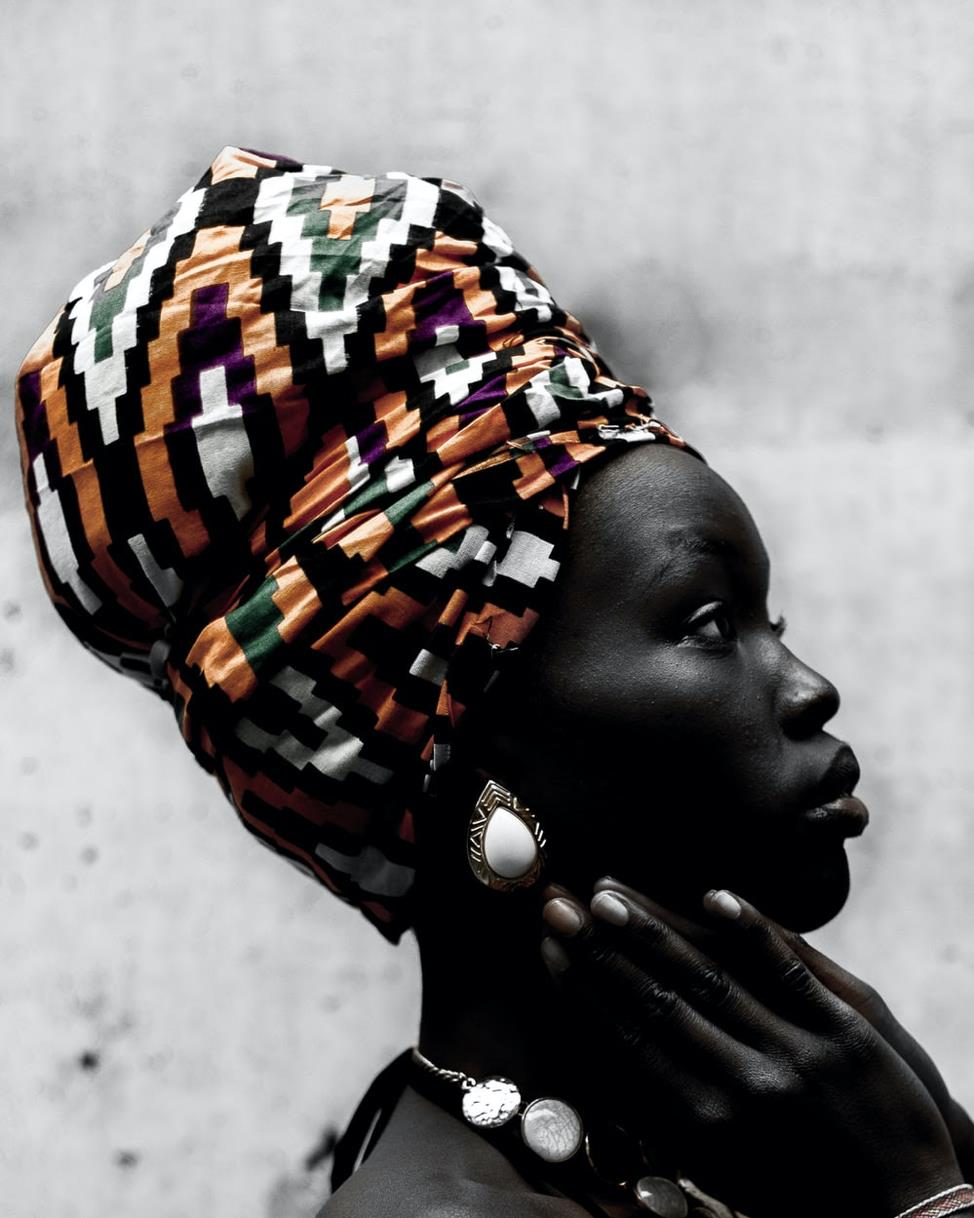
Head Wrap(Photo credit: Oladimeji Odunsi)
African Dress Symbolism
African clothing patterns often depict religious beliefs and political commentary. The colors are also of particular significance, as they interpret the meaning of the pattern, with red symbolizing death, green meaning fertility, white expressing purity, and blue signifying love. In West Africa it’s the agbada and in East Africa, the kanzu is the traditional dress worn by men.
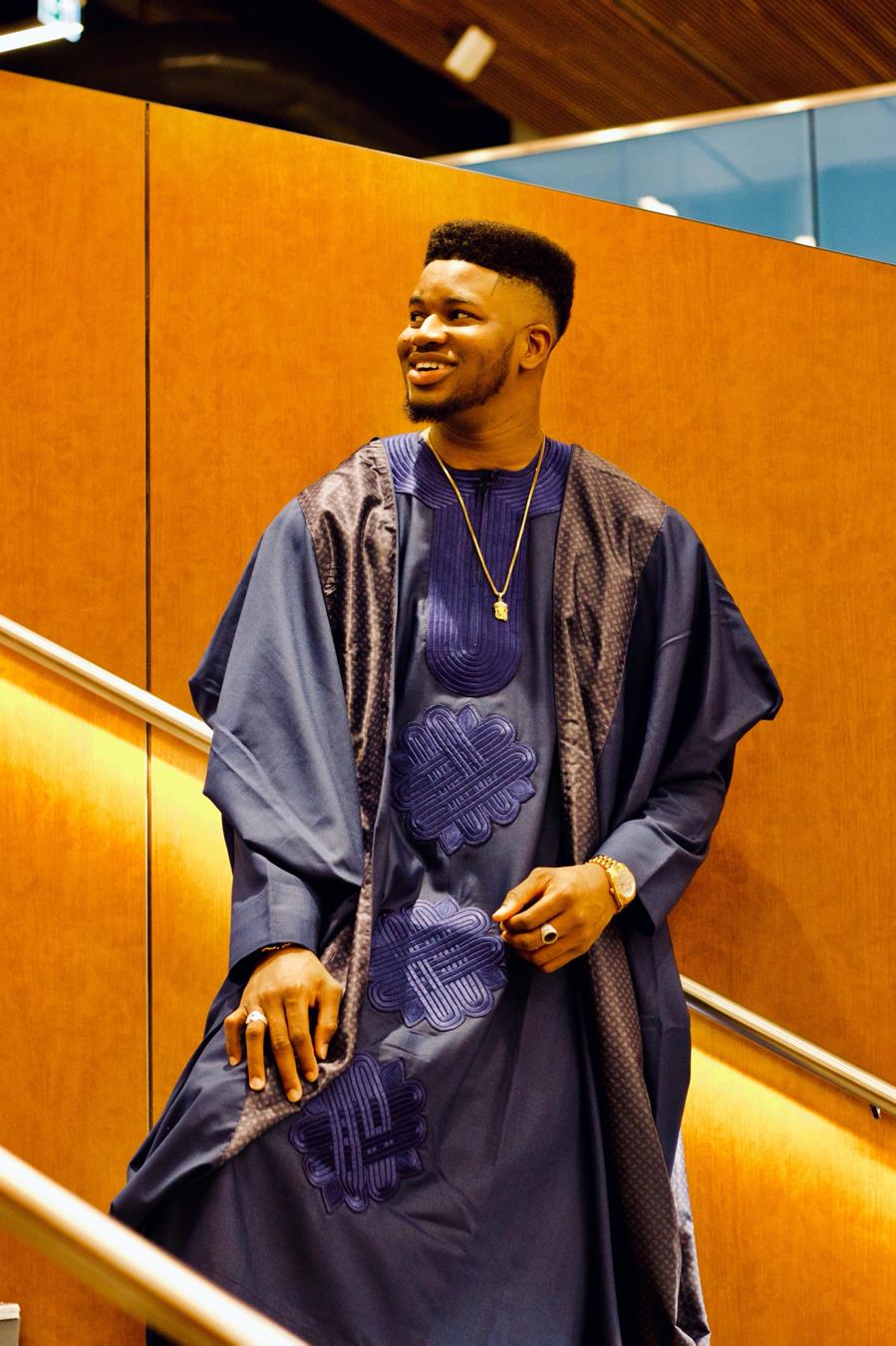
Men’s agabada (Photo credit: Fikayo Aderoju)
For women, it’s the gomesi and the kanga (a colorful piece of printed cotton fabric with a border that is wrapped around the body).
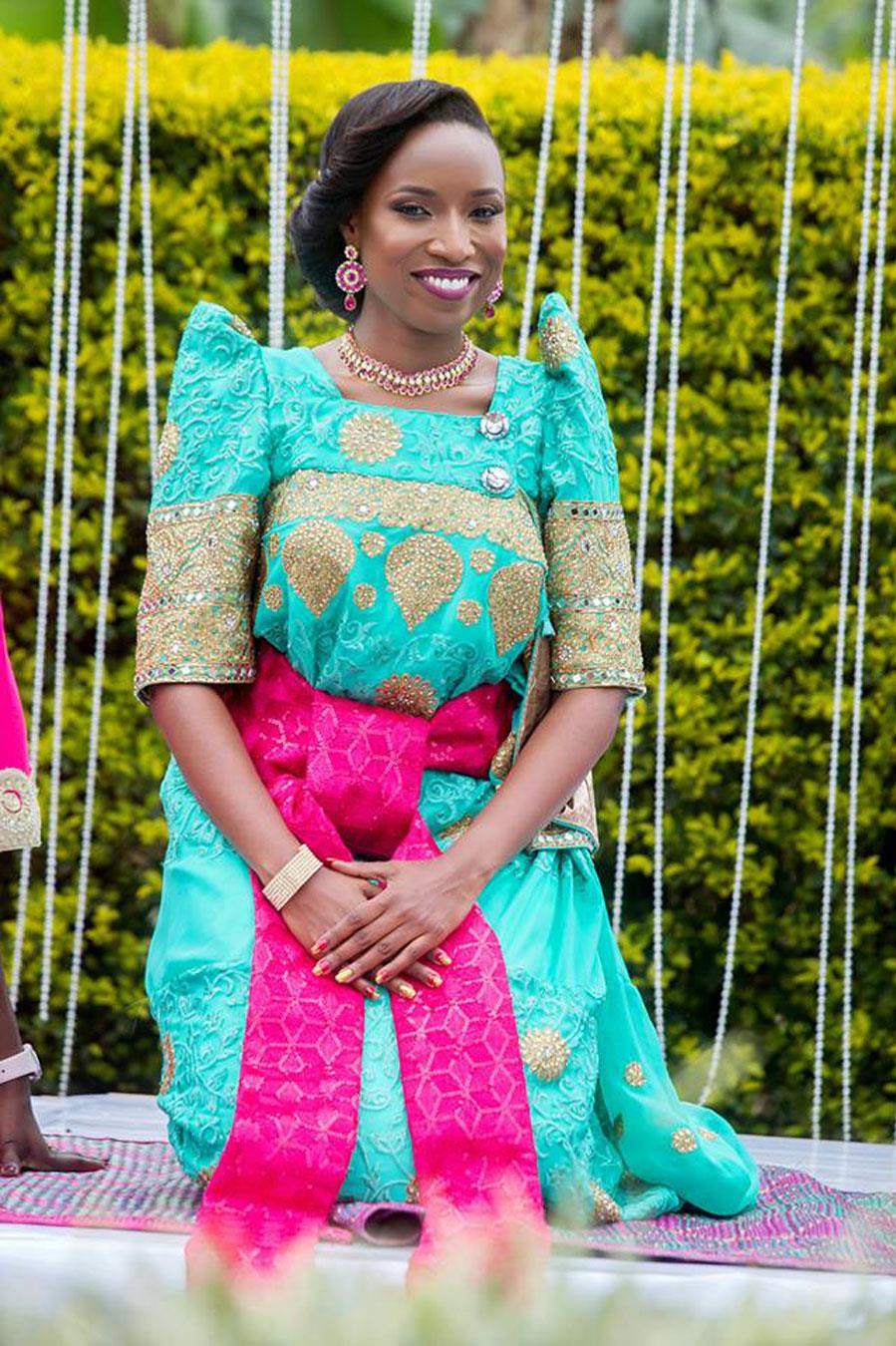
Women’s gomesi (Photo credit: mywedding.co.ug)
African American Design Pioneers
Zelda Barbour Wynn Valdes was the first African American fashion and costume designer, as well as the first black designer to open her own shop in 1948 located on Broadway in New York City. Her designs were worn by such famous entertainers as Dorothy Dandridge, Josephine Baker, Marian Anderson, Ella Fitzgerald, Mae West, Ruby Dee, Eartha Kitt and Sarah Vaughan, among others.
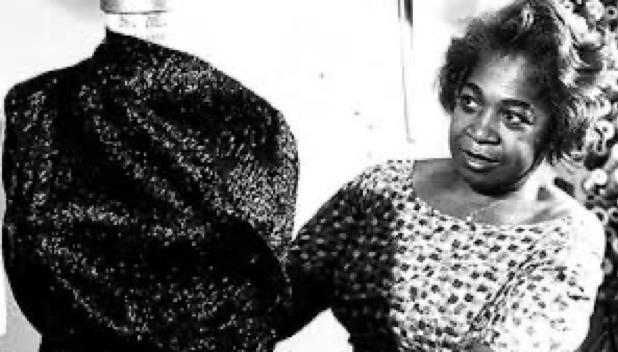
Zelda Barbour Wynn Valdes (Photo credit: blackthen.com)
Zelda Barbour Wynn Valdes was born on June 28, 1905 in Chambersburg, Pennsylvania. She studied her grandmother’s work as a seamstress and also worked in her uncle’s tailoring shop. She began work as a stock girl at a high-end boutique around 1920 and worked her way up to become the boutique’s first black salesclerk and tailor. In 1948, at the age of forty-seven, Valdes opened her boutique in Manhattan on Broadway and West 158th Street with her sister, Mary Barbour, who worked as her assistant. She called her store, Chez Zelda. Valdes’s boutique soon attracted numerous celebrities and society women. In 1949 Valdes was elected president of the New York Chapter of the National Association of Fashion and Accessory Designers (NAFAD), an organization of black designers that was founded by educator and political activist Mary McLeod Bethune. In the early 1950s, Life Magazine described Valdez as the “Black Marilyn Monroe.” In 1958 Playboy Magazine founder Hugh Hefner hired Valdes to design the first Playboy Bunny costume, however the original design had taller ears and the ensemble lacked the trademark bow tie, collar and cuffs.
In 1976, designer Willi Smith launched his company, WilliWear. Smith is considered one of the most successful African American designers in the fashion industry, grossing over $25 million in sales by 1986. To commemorate his work, New York’s Cooper Hewitt Museum held a retrospective of his work in 2020 entitled, Willi Smith: Street Couture.
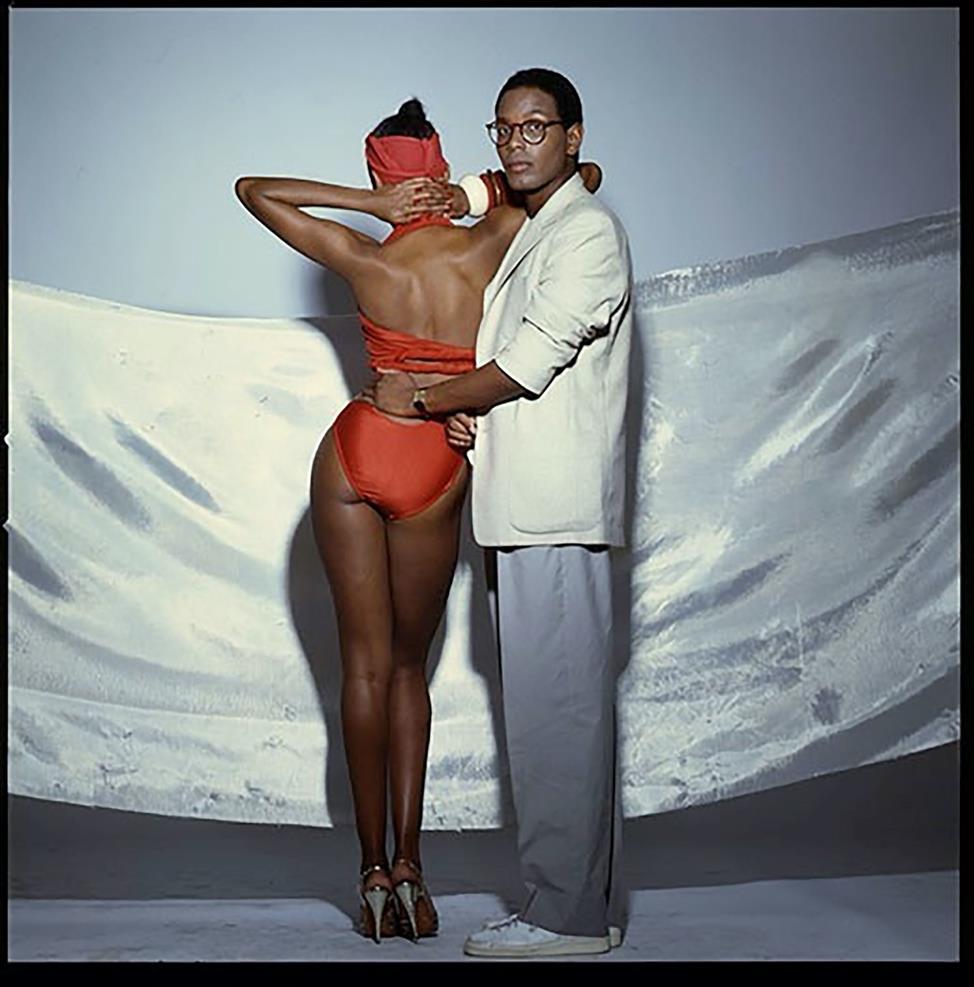
Willi Smith and his model sister Toukie Smith (Photo credit: Cooper Hewitt)
The first black female designer to be recognized by the contemporary fashion industry was Tracy Reese, who founded her eponymous brand in 1998. Based in Detroit, Reese recently announced the launch of a new ethically-diverse label, Hope for Flowers, building on her already diverse and size-inclusive platform.
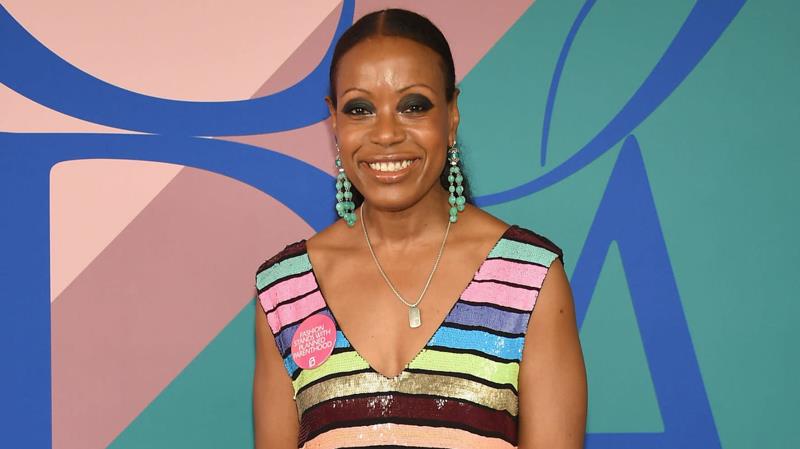
Tracy Reese (Photo credit: Dimitrios Kambouris)
Meet Ozwald Boateng. Born in London to Ghanaian parents, Boateng was the first tailor to present a collection during Paris Fashion Week. In 1994, he opened his retail establishment just off Savile Row and was the youngest and first black tailor ever to do so. In 2014, Harvard University presented Boateng with the prestigious Veritas Award for his achievements and his commitment to global socio-economic development.
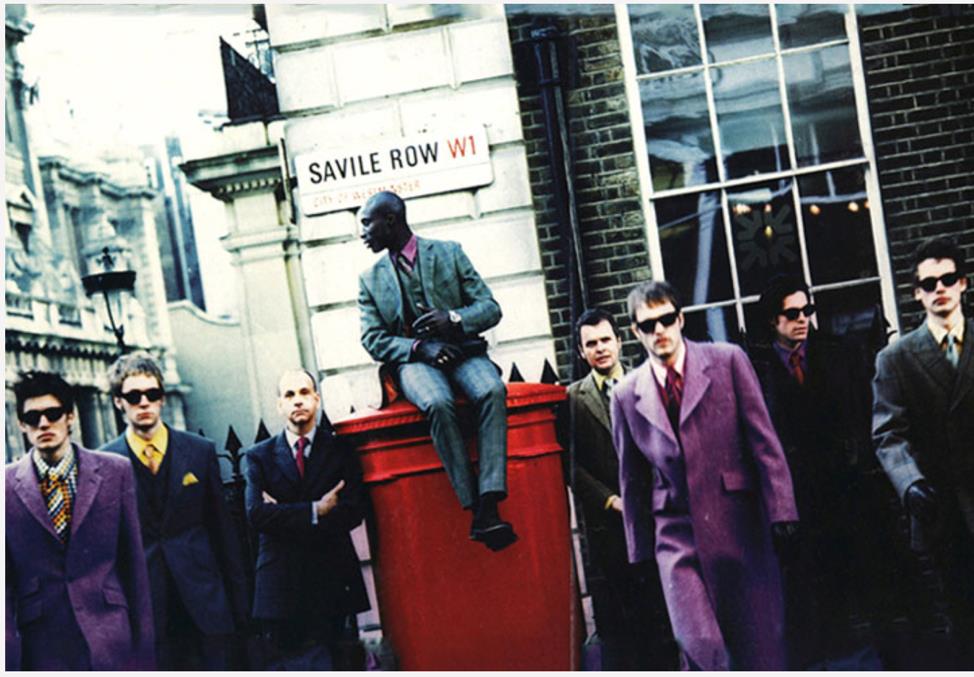
Ozwald Boateng (Photo credit: ozwaldboateng.com)
6 Black Designers to Watch in 2025
Despite having historically driven trends in industries such as food, beauty, fashion, music and media, Black consumers have been overlooked for decades. According to a 2022 Neilson report, “Black consumers possess more power and influence in the retailing marketplace than ever before given their growing buying power and population rate.” The report also notes that the Black population is expected to grow by 22% between 2020 and 2060, along with their buying power, which is expected to reach $1.8 trillion by the end of 2024. An analysis by McKinsey & Company suggests that Black consumers’ spending on apparel and footwear alone will grow by about six percent a year to equal $70 billion by 2030.
The 6 Black designers to watch in 2025 and who are helping shape the fashion industry are: LaQuan Smith, Diotima, Bishme Cromartie, Frederick Anderson, House of Aama, and Sergio Hudson.
Care to share your thoughts with us about Black History month?
-------------------------------------
By: Francesca Sterlacci
Title: Celebrating Black Fashion History: Then & Now
Sourced From: www.universityoffashion.com/blog/celebrating-black-history-fashion/
Published Date: Sat, 08 Feb 2025 02:00:51 +0000
Read More
 FestivalsMusicNew ReleasesArtistsFashion & ClothingVideosPrivacy PolicyTerms And Conditions
FestivalsMusicNew ReleasesArtistsFashion & ClothingVideosPrivacy PolicyTerms And Conditions
